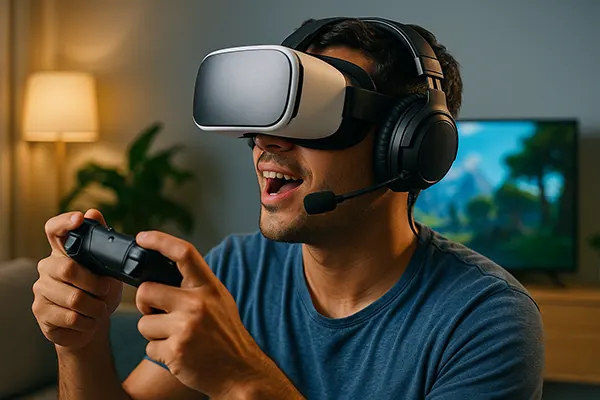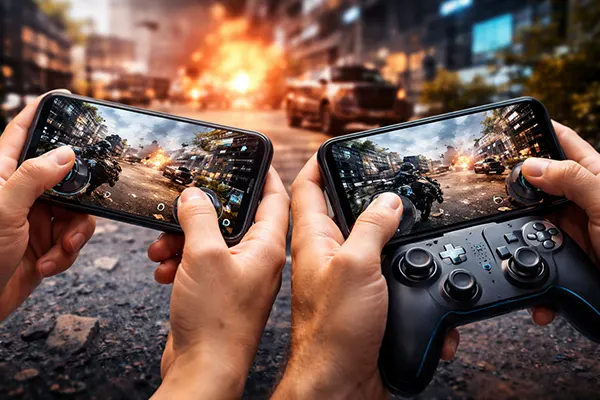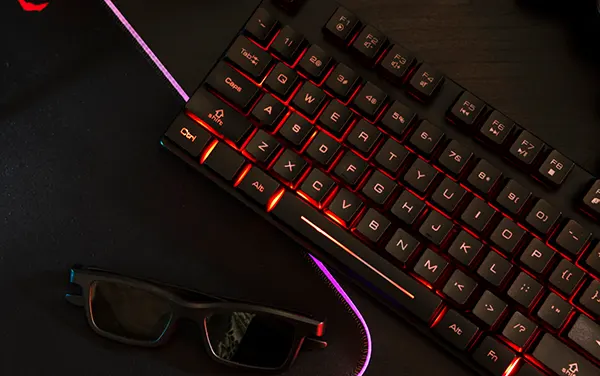
Test-driving Spatial Audio Gaming Headsets in VR: Is There Really a Difference?
Virtual reality is no longer a futuristic fantasy — it’s a rapidly evolving environment that demands precision, immersion and sensory clarity. For gamers who rely heavily on audio cues, choosing the right headset is more than a matter of comfort. Spatial audio headsets promise a three-dimensional soundscape that mimics real-world acoustics. But do they really make a meaningful difference in virtual reality gameplay?
Understanding Spatial Audio in Gaming Headsets
Spatial audio technology replicates how we hear sound in real life, offering a sense of depth and direction. In gaming, especially VR, this means being able to tell whether footsteps are approaching from behind or shots are being fired from above. Unlike stereo sound, spatial audio adds verticality and distance, enhancing the realism of the experience.
Modern gaming headsets implement technologies like Dolby Atmos, DTS:X and proprietary solutions from companies like Sony or SteelSeries. These systems aim to track head movement and adjust sound delivery in real-time. The result is intended to be a fully immersive sound environment that keeps players anchored within the game world.
However, the effectiveness of spatial audio often depends on game design and headset compatibility. Not all VR titles are optimised for advanced audio processing, and some lower-end headsets may struggle to deliver true 3D sound fidelity, even with software support.
Does Spatial Audio Impact VR Gameplay?
From competitive shooters to exploratory RPGs, spatial audio can significantly affect player performance and perception. In titles like “Half-Life: Alyx” or “Resident Evil 4 VR,” the ability to hear directionally enhances spatial awareness and reaction time. You’re not just hearing the world — you’re navigating through it with your ears as much as your eyes.
Test results reveal measurable benefits. Gamers using spatial audio headsets in VR showed quicker response times to auditory cues and experienced greater situational awareness, particularly in fast-paced scenarios. It bridges the gap between realism and responsiveness.
Nonetheless, in casual gaming or less sound-dependent genres, the advantage is less obvious. For puzzle games or meditative VR environments, the difference is present but not critical. This nuance matters for gamers choosing their gear based on playstyle.
Real-World Testing: What Headsets Deliver
To compare performance, several popular spatial audio headsets were tested in VR environments using both competitive and immersive games. Key models included the SteelSeries Arctis Nova Pro Wireless, Razer Kraken V3 HyperSense, and Sony INZONE H9, each offering unique software and driver configurations.
The SteelSeries headset offered accurate soundstage mapping and minimal distortion, proving particularly effective in directional gameplay. Razer’s model emphasised haptic feedback, adding a layer of physical interaction that some players found immersive, though others felt it could be distracting.
Meanwhile, the INZONE H9 shone in its noise cancellation and software-driven 3D audio rendering, though its compatibility with some VR systems required fine-tuning. Each model’s performance varied slightly depending on the VR title used — compatibility remains a determining factor in user experience.
Comfort, Battery Life, and Usability
In addition to sound quality, daily usability plays a vital role in selecting a VR headset. Long sessions in virtual environments demand ergonomic design and low fatigue impact. The Arctis Nova Pro stood out with its swappable batteries and breathable materials, allowing extended play without overheating or discomfort.
Razer’s Kraken delivered in terms of build quality, though its heavier frame may not suit all users. Comfort trade-offs were noted during prolonged gaming sessions. Sony’s model, however, balanced weight and comfort well, with intuitive touch controls and app integration simplifying setup for VR newcomers.
Overall, the user experience went beyond just sound. Battery longevity, heat management, and compatibility with specific VR devices proved just as influential. No single model won on every front — selection should match personal gaming habits and ergonomic needs.

Who Needs Spatial Audio in VR?
The decision to invest in a spatial audio headset ultimately comes down to gaming intent. Competitive players or those engaging with realism-heavy titles will benefit most. When milliseconds matter, or when atmosphere drives immersion, the audio edge is palpable.
For hobbyists and casual gamers, however, budget considerations might outweigh the benefits. Some mid-tier headsets with virtual surround capabilities may deliver sufficient spatial awareness without the full price tag. Evaluating game libraries and play frequency is crucial before investing in premium models.
Additionally, users with accessibility needs — including hearing directionality assistance — may find spatial audio headsets indispensable. In such cases, the hardware contributes to both performance and comfort, improving the overall VR experience dramatically.
How to Choose the Right Headset
Start by verifying VR system compatibility — not all headsets work seamlessly across platforms like Meta Quest, PSVR2 or Valve Index. Prioritise headsets with support for Dolby Atmos or native 3D audio drivers, and always test with your favourite game genre.
Comfort should never be underestimated. Lightweight design, cushioning, and adjustability are crucial for extended sessions. Battery life and charging options also impact user satisfaction in long-term use.
Finally, software matters. Some headsets come with customisable audio settings and equaliser presets, which can make or break the spatial effect. Look for real-time calibration tools and firmware updates that improve device longevity and adaptability over time.
Popular articles
-
 Touchscreens and Gesture Control in Mobile...
Touchscreens and Gesture Control in Mobile...Mobile gaming has changed fundamentally over the …
-
 How Foot Keyboards and Pedal Controllers A...
How Foot Keyboards and Pedal Controllers A...Foot-based input devices have moved from experimental …
-
 Evolution of PC and Console Controllers in...
Evolution of PC and Console Controllers in...The past two years have reshaped how …
